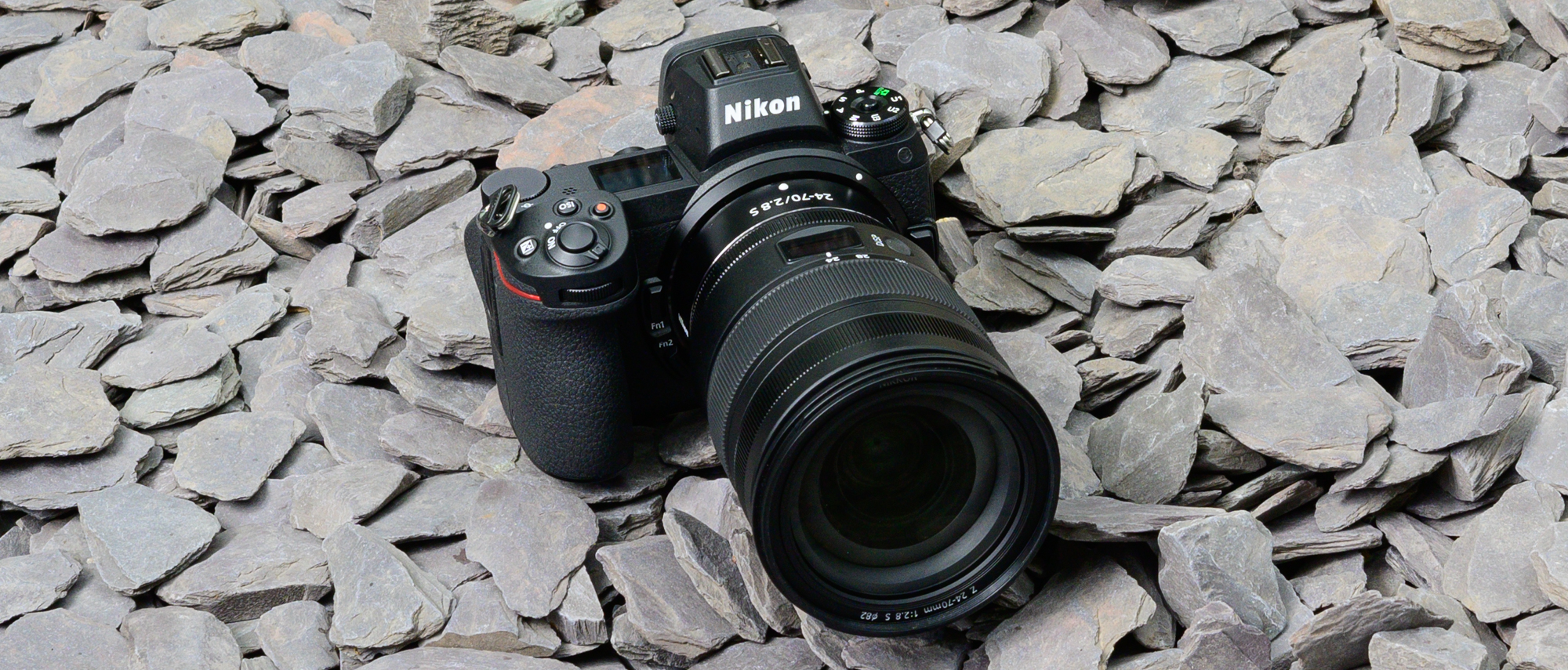TechRadar Verdict
This might be the costliest Z-mount lens yet – and by some margin too – but its performance goes a long way to justifying that price tag. Aside from a couple of aberrations that are relatively easy to rectify, there's impressively little to fault. Handling is great, autofocus is beautifully smooth and fast, and detail is exceptional. What a lens!
Pros
- +
Reasonably compact
- +
Smooth, fast and almost silent AF
- +
Stellar sharpness, even at f/2.8
- +
Great build and weather sealing
Cons
- -
Vignetting at wider apertures
- -
Barrel and pincushion distortion
- -
Control ring can't be clicked
- -
Built-in raw profile doesn't correct vignetting
Why you can trust TechRadar
The NIKKOR Z 24–70mm f/2.8 S is a pro-grade, constant-aperture standard zoom for the company's Z-system mirrorless cameras; right now, that's the Z6 and the more senior Z7.
Nikon may have already introduced a 24-70mm lens in this system – the NIKKOR Z 24-70mm f/4 S – but this new optic brings with it a handful of advantages over that lens.
The most significant of these is the wider f/2.8 constant aperture, which represents one extra stop of light-gathering power. For the pro or well-heeled enthusiast photographer who's either looking to switch to the Z system or has already made the jump, this is the key draw – although the trade-off is that this lens is considerably larger and heavier than the f/4 S, not to mention more than double the price.
Focal length: 24-70mm
Mount: Nikon Z
Filter size: 82mm
Max aperture: f/2.8
Maximum magnification: 0.22x
Dimensions: Approx. 89x126 mm
Weight: 805g
Features
- Constant f/2.8 aperture
- Nine diaphragm blades
- ARNEO, flourine and Nano Crystal Coat technologies
The lens has been designed with 17 elements across 15 groups. Among these sit two extra-low dispersion (ED) elements to help control chromatic aberration, and four aspherical elements to keep spherical aberrations and distortion low.
The elements have also been treated with a range of different coatings, including the longstanding Nano Crystal Coat anti-reflective technology, and a fluorine coat on the front and rear elements to keep water, grease and dust away.
This is also the first outing for Nikon's ARNEO coat, another anti-reflective coating that's said to compensate for light entering the lens from vertical angles. Nikon claims this should make the lens better able to keep contrast high, and reflections that may cause aberrations low, when the light source is within the frame (rather than off to the side, in which case light would be entering the lens from a more oblique angle).
The lens has been finished with a stepping motor to handle autofocus, and also a new Multi-Focus System. The purpose of this is to keep focus speeds fast regardless of subject distance, and it works by moving two focus groups at the same time. Full-time manual focus, which lets you adjust the focus position manually without leaving autofocus, is also possible.
There's no Vibration Reduction system inside the lens, although Vibration Reduction is currently found inside compatible bodies, so you can still benefit from the technology when using this or any other compatible lens. Elsewhere, nine diaphragm blades form the stop, which should help to keep bokeh nice and round.
Build and handling
- OLED panel integrated in barrel
- "Extensive" weather sealing
- Focus, zoom and control rings
With a weight of 805g, the NIKKOR Z 24–70mm f/2.8 S is perhaps lighter than expected. At the time of its announcement, Nikon highlighted the fact that it had managed to make the lens 18.4% shorter and 24.7% lighter than its existing AF-S NIKKOR 24-70mm f/2.8E ED VR for its DSLR line, although the difference is less pronounced between this and the non-VR AF-S NIKKOR 24-70mm f/2.8G ED that's still available.
Nikon's Z6 and Z7 bodies are reasonably compact, so a wide-aperture zoom lens of this sort risks unbalancing the combination and making it more awkward to handle. In reality, however, the lens pairs very well with either body; the deep grip easily allows you to support a weightier optic such as this one, and the fact that the barrel tapers in towards the rear leaves plenty of room in this area for even larger hands to breathe.
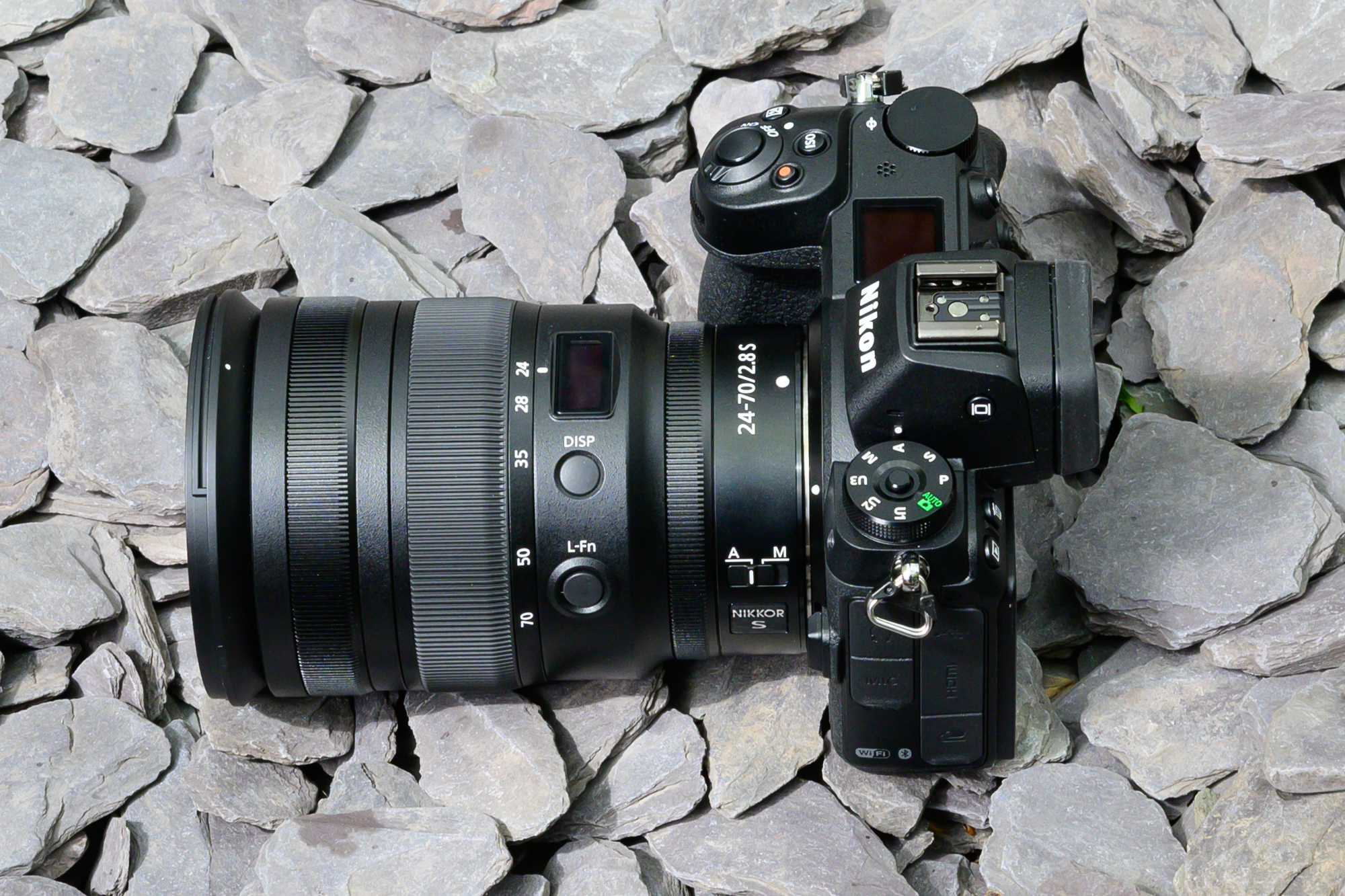
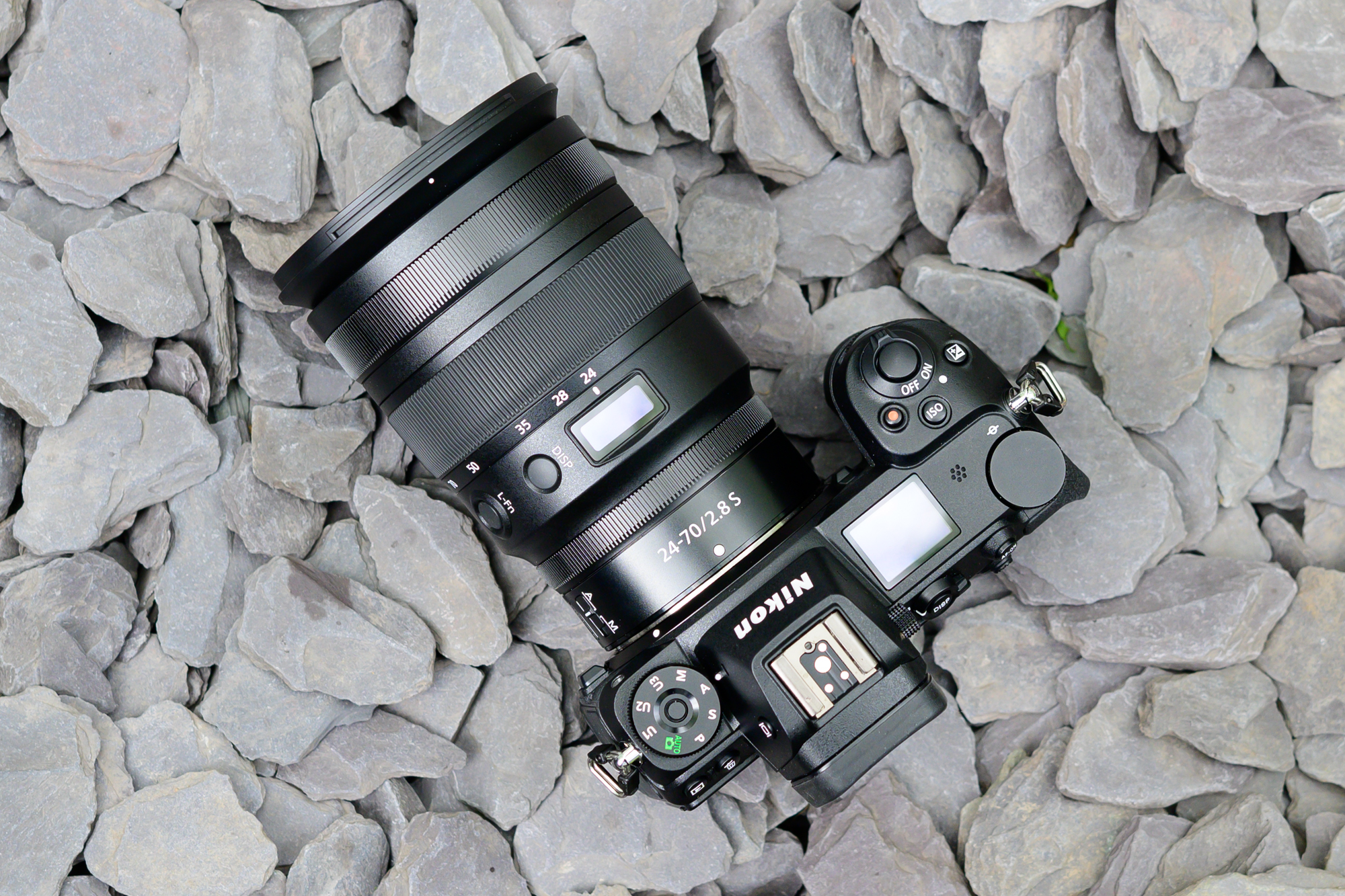
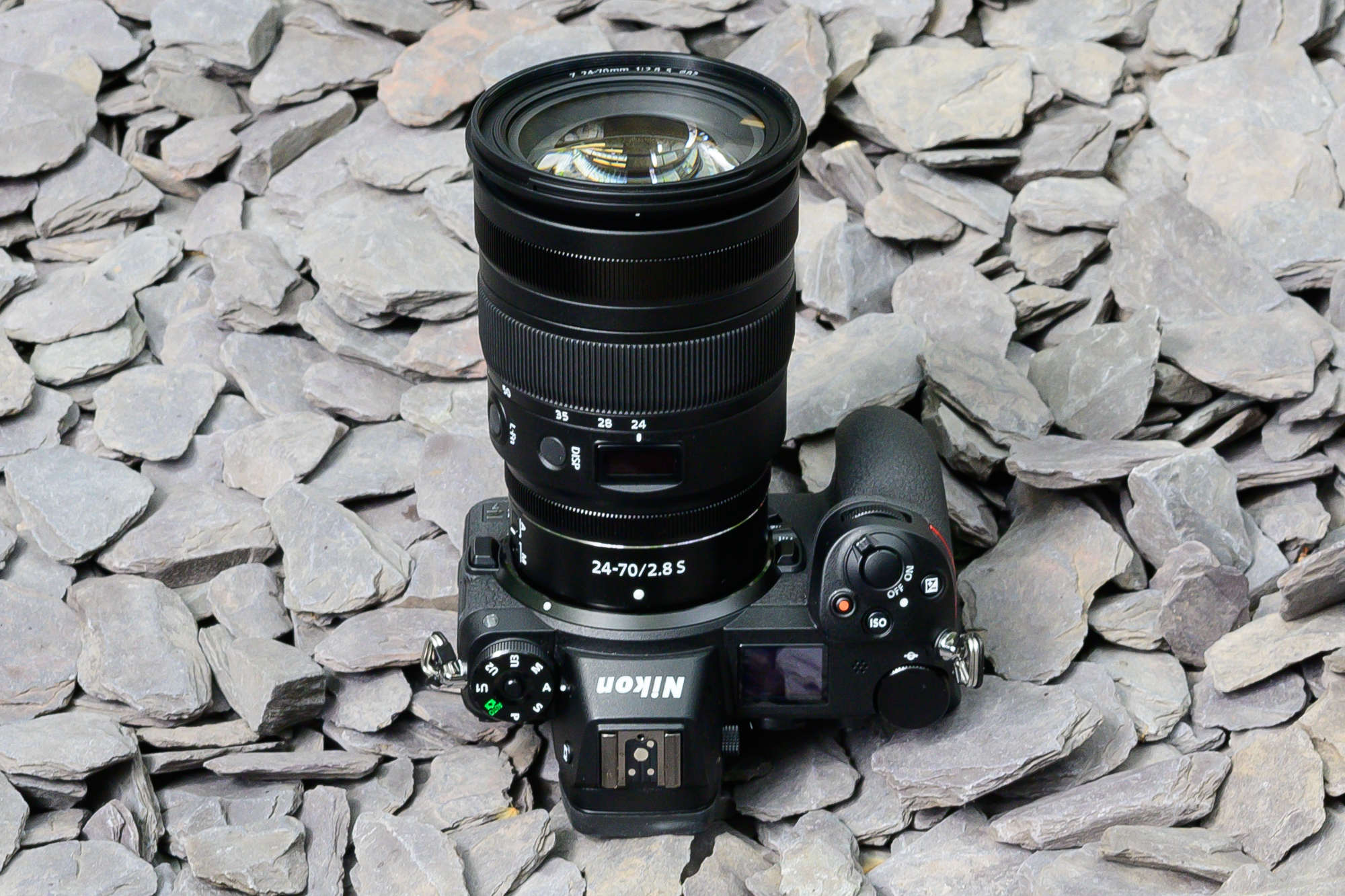
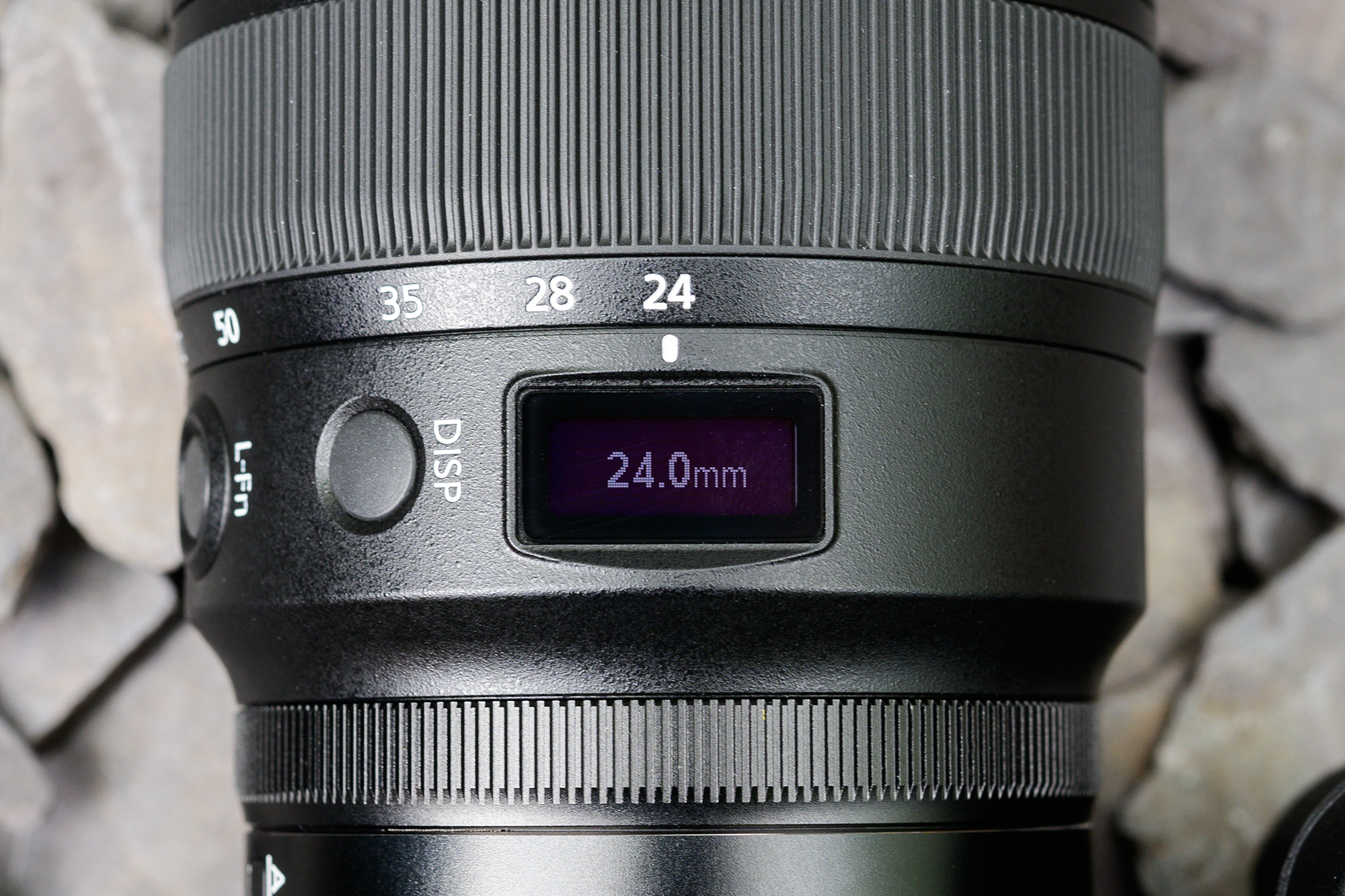
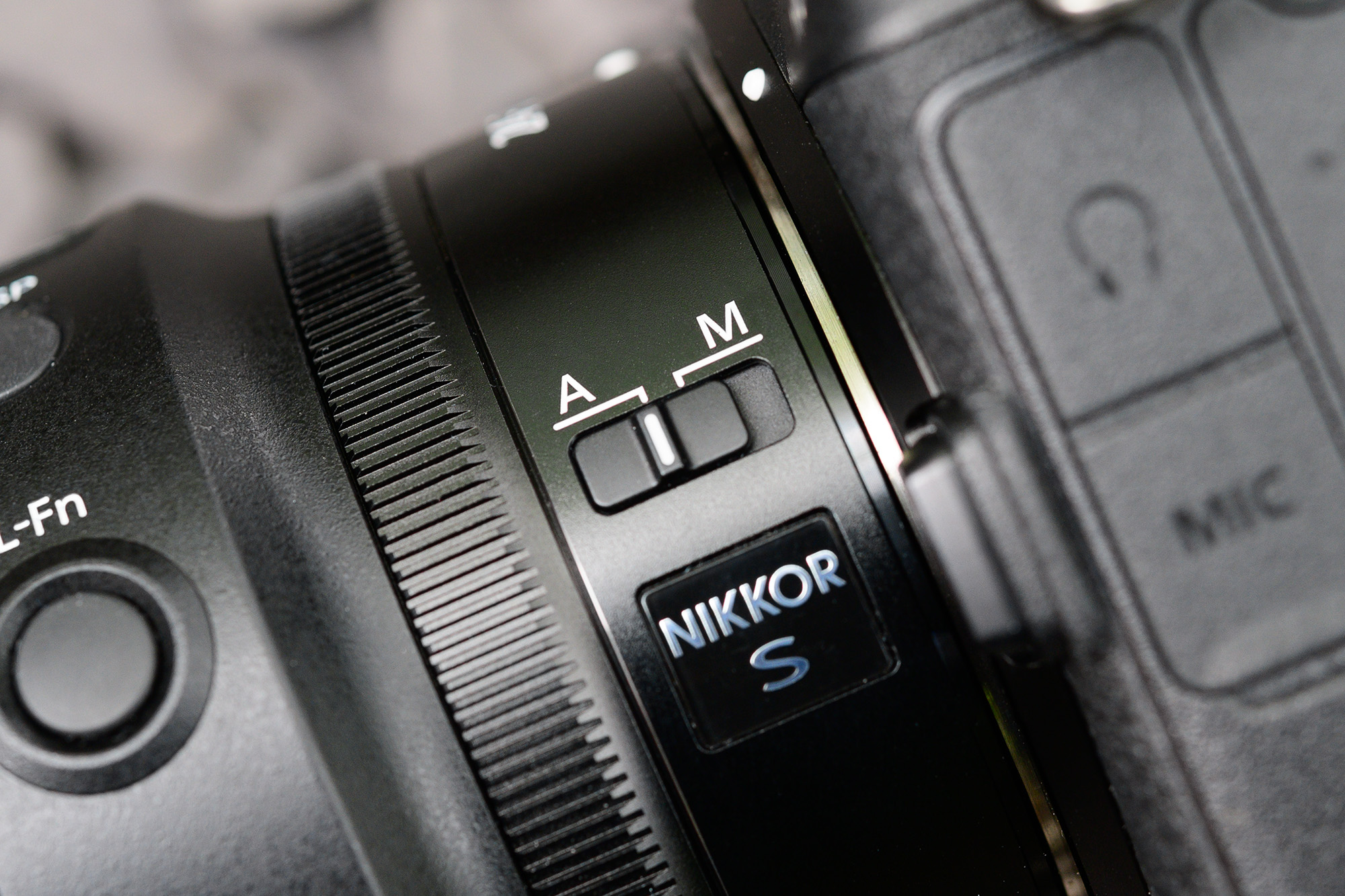
The lens has been furnished with three rings around its barrel. The one closest to the camera is a control ring, the function of which can be customized to taste, while a zoom ring sits in the middle and a focusing ring is positioned at the front. Incidentally, this is the first time we've seen these three separate rings on a single lens, as previous Z-mount lenses have combined the focus and control rings into one.
The control ring is de-clicked as standard, ostensibly so that it can be used during video recording (where the clicking sound would be picked up in footage). This is fairly resistant when turned, which is probably just as well, as the lack of feedback means you might otherwise find it too sensitive. It's a shame you can't alternate between clicked and de-clicked operation, however, as those concerned more with shooting stills will likely appreciate the feedback from a clickable ring.
The zoom ring is the one that will be used most frequently, so it follows that this is nice and broad, and sits in the most convenient place for the hand to access, and its free movement and slightly bulbous design make for comfortable operation. The focusing ring at the front has noticeably more resistance in comparison, roughly as much as the control ring, which is no doubt intentional, as this allows for focus to be controlled more precisely.
Two buttons join the rings on the barrel. The first is the Display. button, which alternates between showing focal length, aperture, focusing distance and depth of field on the OLED panel in the middle of the barrel. The panel itself is a nice touch, although it can be tricky to view outdoors.
It's nice to see that it shows the lens's precise focal length, although focal length can be appreciated quite easily on the zoom ring above this. Quite whether the panel needs to show aperture when this is already displayed on the camera's top-plate LCD also makes you question how necessary this feature is.
It does, however, display focusing distance and depth of field, both of which are more obviously useful, although it would be good to have the former displayed more precisely and numerically (as with the focal length) rather than on a scale as we have here, where exact focusing distance may be harder to determine.
The other button is the L-Fn button, which can be customized to one of 21 functions. So, you can have this access either a grid display, metering modes, raw shooting or something else. This button is placed precisely where your thumb is likely to be sitting, so it makes for very convenient use, and it also clicks nicely into the barrel when pressed – although this clicking is easily picked up on video recordings.
Performance
- Fast, smooth and almost silent autofocus motor
- Excellent sharpness at wide-aperture settings
- Some vignetting and distortion visible
The focusing motor is very prompt when tasked with focusing on subjects at different distances, and moves the elements inside the lens with a wonderful smoothness from one position to the next. It's also almost silent when shooting stills; you can just about hear it when recording videos, although only in the absence of ambient noise.
This is a lens that will no doubt be used for many images at its widest f/2.8 aperture, so it's great to find that sharpness is superb here. It's very high in the center of the frame, but is maintained superbly to the edges too.
There is a tiny dip in sharpness in the corners at the 24mm end at the widest aperture, but this really is very small (and potentially not even noticeable when the lens is used with the Z6 and its less taxing sensor, rather than the 45MP Z7). Out-of-focus areas look very natural, too.
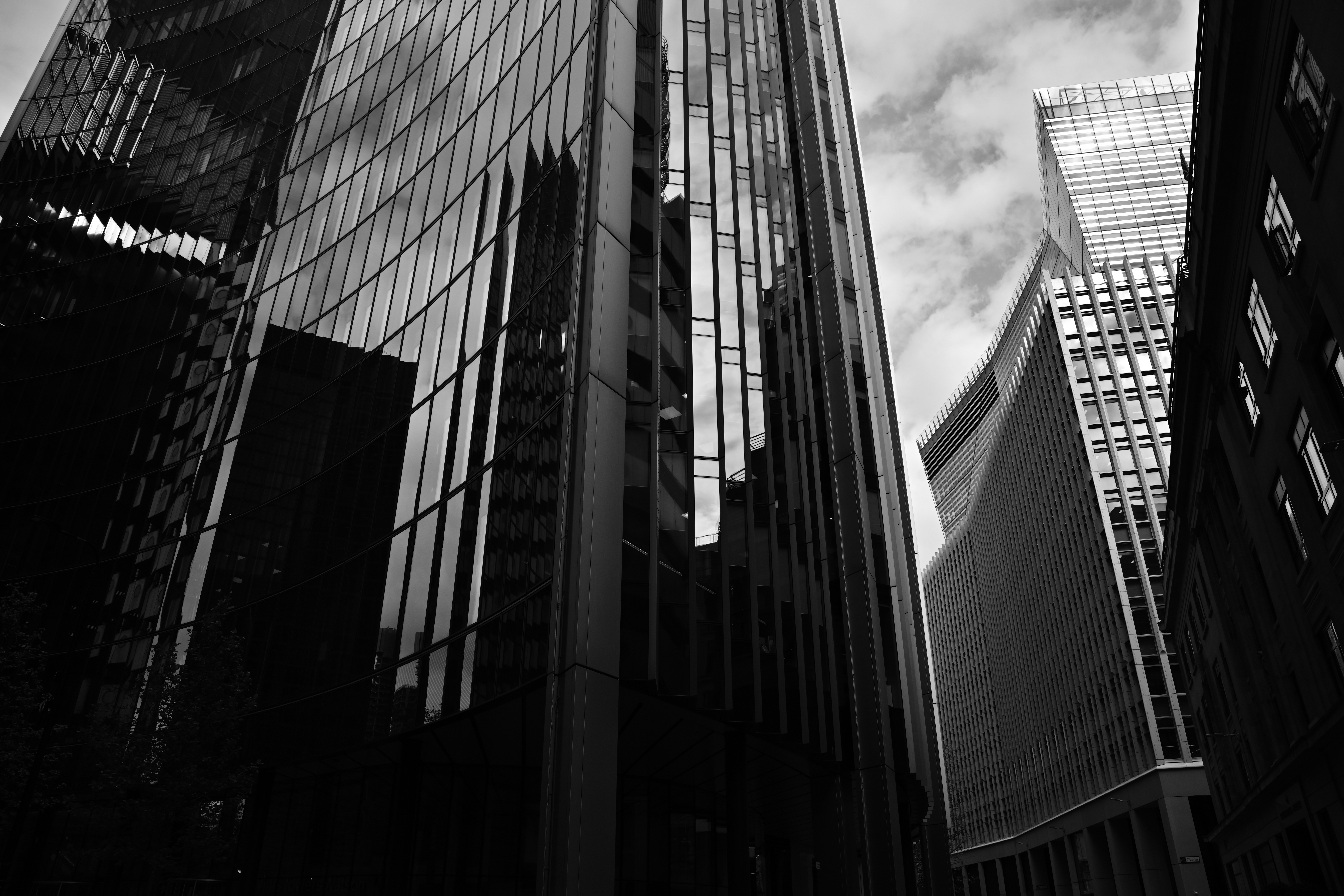
Click here to see the full-size image

Click here to see the full-size image
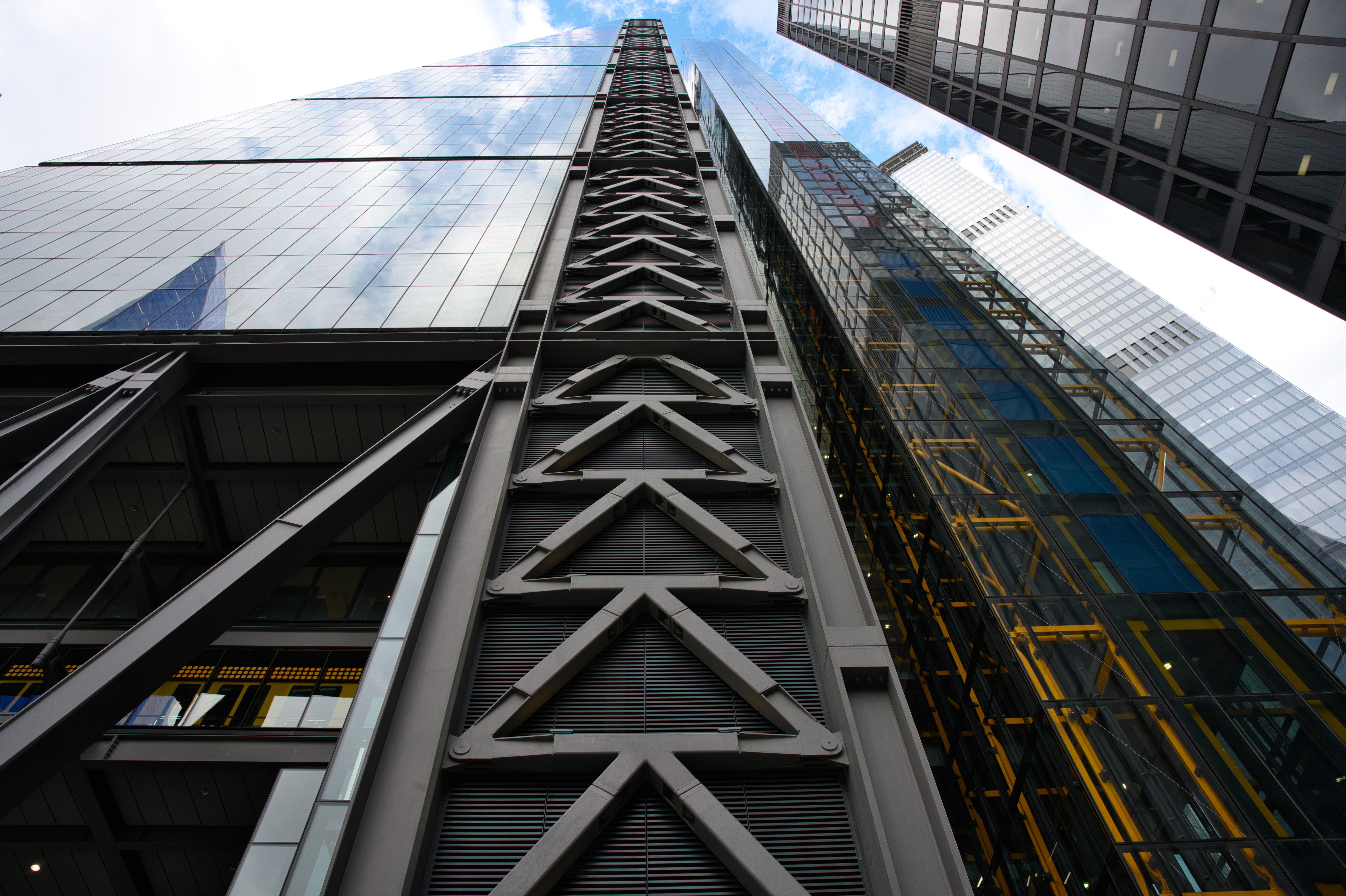
Click here to see the full-size image

Click here to see the full-size image

Click here to view the full-size image

Click here to view the full-size image

Click here to view the full-size image
A profile that immediately banishes curvilinear distortion and lateral chromatic aberration is baked into raw files, so if you open them in Adobe Camera Raw or Lightroom you're unlikely to see these.
So what happens when you open raw files in other software? Distortion can be obvious with some subjects, and there does appear to be a very small amount of (lateral) chromatic aberration too. A moderate amount of vignetting is perhaps most noticeable of all, so it's a shame this isn't automatically corrected by the profile too.

Verdict
By any measure, the NIKKOR Z 24–70mm f/2.8 S is an impressive lens. Build quality and attention to detail are both excellent, and the added bonus of weather sealing gives you greater confidence to carry on shooting when the weather turns. Handling and operation are very positive too, with the provision of the control ring and L-Fn button providing useful inputs for additional control.
The focusing motor also manages to combine the three key attributes we seek in such a lens: fast focus, very smooth movements and very little noise, making it perfect whether you're shooting stills or videos.
With images, the most critical things – i.e., those that can't easily be compensated for with pre- or post-capture corrections – are all in order. Sharpness on the whole is excellent at wide apertures in addition to narrower ones, and the fact that this is so consistent across the frame, right to the corners, is impressive, particularly at 70mm.
Lateral chromatic aberrations are low and longitudinal ones are essentially absent, although – possibly in order to keep the lens as compact and lightweight as possible – it appears the lens has been designed so that vignetting and curvilinear distortions are corrected in-camera or through the profile built into the raw files, rather than optically; these are easy to spot when corrections are disabled.
Overall, while it's not faultless and a considerable expense, this is a lens that does justice to the excellent sensor inside the Z7. Early Z system adopters should be very satisfied with what the Z 24–70mm f/2.8 S delivers.
